- Home
- Tom Clancy
Tom Clancy's Jack Ryan Books 1-6 Page 10
Tom Clancy's Jack Ryan Books 1-6 Read online
Page 10
“Put it on speaker,” Mancuso told Thompson. He didn’t want to disturb the operators. The lieutenant was already keying the signal into the BC-10.
The bulkhead-mounted speaker would have commanded a four-figure price in any stereo shop for its clarity and dynamic perfection; like everything else on the 688-class sub, it was the very best that money could buy. As Jones worked on the sound controls they heard the whining chirp of propeller cavitation, the thin screech associated with a bent propeller blade, and the deeper rumble of a Victor’s reactor plant at full power. The next thing Mancuso heard was the printer.
“Victor I-class, number six,” Thompson announced.
“Right,” Jones nodded. “Vic-six, bearing still zero-five-zero.” He plugged the mouthpiece into his headphones. “Conn, sonar, we have a contact. A Victor class, bearing zero-five-zero, estimated target speed thirty knots.”
Mancuso leaned out into the passageway to address Lieutenant Pat Mannion, officer of the deck. “Pat, man the fire-control tracking party.”
“Aye, Cap’n.”
“Wait a minute!” Jones’ hand went up. “Got another one!” He twiddled some knobs. “This one’s a Charlie class. Damned if he ain’t digging holes, too. More easterly, bearing zero-seven-three, doing turns for about twenty-eight knots. We know this guy, too. Yeah, Charlie II, number eleven.” Jones slipped a phone off one ear and looked at Mancuso. “Skipper, the Russkies have sub races scheduled for today?”
“Not that they told me about. Of course, we don’t get the sports page out here,” Mancuso chuckled, swirling the coffee around in his cup and hiding his real thoughts. What the hell was going on? “I suppose I’ll go forward and take a look at this. Good work, guys.”
He went a few steps forward into the attack center. The normal steaming watch was set. Mannion had the conn, with a junior officer of the deck and seven enlisted men. A first-class firecontrolman was entering data from the target motion analyzer into the Mark 117 fire control computer. Another officer was entering control to take charge of the tracking exercise. There was nothing unusual about this. The whole watch went about its work alertly but with the relaxed demeanor that came with years of training and experience. While the other armed services routinely had their components run exercises against allies or themselves in emulation of Eastern Bloc tactics, the navy had its attack submarines play their games against the real thing—and constantly. Submariners typically operated on what was effectively an at-war footing.
“So we have company,” Mannion observed.
“Not that close,” Lieutenant Charles Goodman noted. “These bearings haven’t changed a whisker.”
“Conn, sonar.” It was Jones’ voice. Mancuso took it.
“Conn, aye. What is it, Jonesy?”
“We got another one, sir. Alfa 3, bearing zero-five-five. Running flat out. Sounds like an earthquake, but faint, sir.”
“Alfa 3? Our old friend, the Politovskiy. Haven’t run across her in a while. Anything else you can tell me?”
“A guess, sir. The sound on this one warbled, then settled down, like she was making a turn. I think she’s heading this way—that’s a little shaky. And we have some more noise to the northeast. Too confused to make any sense of just now. We’re working on it.”
“Okay, nice work, Jonesy. Keep at it.”
“Sure thing, Captain.”
Mancuso smiled as he set the phone down, looking over at Mannion. “You know, Pat, sometimes I wonder if Jonesy isn’t part witch.”
Mannion looked at the paper tracks that Goodman was drawing to back up the computerized targeting process. “He’s pretty good. Problem is, he thinks we work for him.”
“Right now we are working for him.” Jones was their eyes and ears, and Mancuso was damned glad to have him.
“Chuck?” Mancuso asked Lieutenant Goodman.
“Bearing still constant on all three contacts, sir.” Which probably meant they were heading for the Dallas. It also meant that they could not develop the range data necessary for a fire control solution. Not that anyone wanted to shoot, but this was the point of the exercise.
“Pat, let’s get some sea room. Move us about ten miles east,” Mancuso ordered casually. There were two reasons for this. First, it would establish a base line from which to compute probable target range. Second, the deeper water would make for better acoustical conditions, opening up to them the distant sonar convergence zone. The captain studied the chart as his navigator gave the necessary orders, evaluating the tactical situation.
Bartolomeo Mancuso was the son of a barber who closed his shop in Cicero, Illinois, every fall to hunt deer on Michigan’s Upper Peninsula. Bart had accompanied his father on these hunts, shot his first deer at the age of twelve and every year thereafter until entering the Naval Academy. He had never bothered after that. Since becoming an officer on nuclear submarines he had learned a much more diverting game. Now he hunted people.
Two hours later an alarm bell went off on the ELF radio in the sub’s communications room. Like all nuclear submarines, the Dallas was trailing a lengthy wire antenna attuned to the extremely low-frequency transmitter in the central United States. The channel had a frustratingly narrow data band width. Unlike a TV channel, which transmitted thousands of bits of data per frame, thirty frames per second, the ELF radio passed on data slowly, about one character every thirty seconds. The duty radioman waited patiently while the information was recorded on tape. When the message was finished, he ran the tape at high speed and transcribed the message, handing it to the communications officer who was waiting with his code book.
The signal was actually not a code but a “one-time-pad” cipher. A book, published every six months and distributed to every nuclear submarine, was filled with randomly generated transpositions for each letter of the signal. Each scrambled three-letter group in this book corresponded to a preselected word or phrase in another book. Deciphering the message by hand took under three minutes, and when that was completed it was carried to the captain in the attack center.
COMSUBLANT—commander of the Submarine Force in the Atlantic—was Mancuso’s big boss, Vice Admiral Vincent Gallery. The old man was evidently contemplating a reshuffling of his entire force, no minor affair. The next wake-up signal, AAA—encrypted, of course—would alert them to go to periscope-antenna depth to get more detailed instructions from SSIX, the submarine satellite information exchange, a geosynchronous communications satellite used exclusively by submarines.
The tactical situation was becoming clearer, though its strategic implications were beyond his ability to judge. The ten-mile move eastward had given them adequate range information for their initial three contacts and another Alfa which had turned up a few minutes later. The first of the contacts, Vic 6, was now within torpedo range. A Mark 48 was locked in on her, and there was no way that her skipper could know the Dallas was here. Vic 6 was a deer in his sights—but it wasn’t hunting season.
Though not much faster than the Victors and Charlies, and ten knots slower than the smaller Alfas, the Dallas and her sisters could move almost silently at nearly twenty knots. This was a triumph of engineering and design, the product of decades of work. But moving without being detected was useful only if the hunter could at the same time detect his quarry. Sonars lost effectiveness as their carrier platform increased speed. The Dallas’ BQQ-5 retained twenty percent effectiveness at twenty knots, nothing to cheer about. Submarines running at high speed from one point to another were blind and unable to harm anyone. As a result, the operating pattern of an attack submarine was much like that of a combat infantryman. With a rifleman it was called dash-and-cover; with a sub, sprint-and-drift. After detecting a target, a sub would race to a more advantageous position, stop to reacquire her prey, then dash again until a firing position had been achieved. The sub’s quarry would be moving too, and if the submarine could gain position in front of it, she had then only to lie in wait like a great hunting cat to strike.
The subma
riner’s trade required more than skill. It required instinct, and an artist’s touch; monomaniacal confidence, and the aggressiveness of a professional boxer. Mancuso had all of these things. He had spent fifteen years learning his craft, watching a generation of commanders as a junior officer, listening carefully at the frequent round-table discussions which made submarining a very human profession, its lessons passed on by verbal tradition. Time on shore had been spent training in a variety of computerized simulators, attending seminars, comparing notes and ideas with his peers. Aboard surface ships and ASW aircraft he learned how the “enemy”—the surface sailors—played his own hunting game.
Submariners lived by a simple motto: There are two kinds of ships, submarines…and targets. What would Dallas be hunting? Mancuso wondered. Russian subs? Well, if that was the game and the Russians kept racing around like this, it ought to be easy enough. He and the Swiftsure had just bested a team of NATO ASW experts, men whose countries depended on their ability to keep the sea-lanes open. His boat and his crew were performing as well as any man could ask. In Jones he had one of the ten best sonar operators in the fleet. Mancuso was ready, whatever the game might be. As on the opening day of hunting season, outside considerations were dwindling away. He was becoming a weapon.
CIA Headquarters
It was 4:45 in the morning, and Ryan was dozing fitfully in the back of a CIA Chevy taking him from the Marriott to Langley. He’d been over for what? twenty hours? About that, enough time to see his boss, see Skip, get the presents for Sally, and check the house. The house looked to be in good shape. He had rented it to an instructor at the Naval Academy. He could have gotten five times the rent from someone else, but he didn’t want any wild parties in his home. The officer was a Bible-thumper from Kansas, and made an acceptable custodian.
Five and a half hours of sleep in the past—thirty? Something like that; he was too tired to look at his watch. It wasn’t fair. Sleeplessness murders judgment. But it made little sense telling himself that, and telling the admiral would make less.
He was in Greer’s office five minutes later.
“Sorry to have to wake you up, Jack.”
“Oh, that’s all right, sir,” Ryan returned the lie. “What’s up?”
“Come on over and grab some coffee. It’s going to be a long day.”
Ryan dropped his topcoat on the sofa and walked over to pour a mug of navy brew. He decided against Coffee Mate or sugar. Better to endure it naked and get the caffeine full force.
“Any place I can shave around here, sir?”
“Head’s behind the door, over in the corner.” Greer handed him a yellow sheet torn from a telex machine. “Look at this.”
TOP SECRET
102200Z*****38976
NSA SIGINT BULLETIN
REDNAV OPS
MESSAGE FOLLOWS
AT 083145Z NSA MONITOR STATIONS [DELETED] [DELETED] AND [DELETED] RECORDED AN ELF BROADCAST FROM REDFLEET ELF FACILITY SEMIPOLIPINSK XX MESSAGE DURATION 10 MINUTES XX 6 ELEMENTS XX
ELF SIGNAL IS EVALUATED AS “PREP” BROADCAST TO REDFLEET SUBMARINES AT SEA XX
AT 090000Z AN “ALL SHIPS” BROADCAST WAS MADE BY REDFLEET HEADQUARTERS CENTRAL COMMO STATION TULA AND SATELLITES THREE AND FIVE XX BANDS USED: HF VHF UHF XX MESSAGE DURATION 39 SECONDS WITH 2 REPEATS IDENTICAL CONTENT MADE AT 091000Z AND 092000Z XX 475 5-ELEMENT CIPHER GROUPS XX
SIGNAL COVERAGE AS FOLLOWS: NORTHERN FLEET AREA BALTIC FLEET AREA AND MED SQUADRON AREA XX NOTE FAR EAST FLEET NOT REPEAT NOT AFFECTED BY THIS BROADCAST XX
NUMEROUS ACKNOWLEDGMENT SIGNALS EMANATED FROM ADDRESSES IN AREAS CITED ABOVE XX ORIGIN AND TRAFFIC ANALYSIS TO FOLLOW XX NOT COMPLETED AT THIS TIME XX BEGINNING AT 100000Z NSA MONITOR STATIONS [DELETED] [DELETED] AND [DELETED] RECORDED INCREASED HF AND VHF TRAFFIC AT REDFLEET BASES POLYARNYY SEVEROMORSK PECHENGA TALLINN KRONSTADT AND EASTERN MED AREA XX ADDITIONAL HF AND VHF TRAFFIC FROM REDFLEET ASSETS AT SEA XX AMPLIFICATION TO FOLLOW XX
EVALUATION: A MAJOR UNPLANNED REDFLEET OPERATION HAS BEEN ORDERED WITH FLEET ASSETS REPORTING AVAILABILITY AND STATUS XX
END BULLETIN
NSA SENDS
102215Z
BREAKBREAK
Ryan looked at his watch. “Fast work by the boys at NSA, and fast work by our duty watch officers, getting everybody up.” He drained his mug and went over for a refill. “What’s the word on signal traffic analysis?”
“Here.” Greer handed him a second telex sheet.
Ryan scanned it. “That’s a lot of ships. Must be nearly everything they have at sea. Not much on the ones in port, though.”
“Landline,” Greer observed. “The ones in port can phone fleet ops, Moscow. By the way, that is every ship they have at sea in the Western Hemisphere. Every damned one. Any ideas?”
“Let’s see, we have that increased activity in the Barents Sea. Looks like a medium-sized ASW exercise. Maybe they’re expanding it. Doesn’t explain the increased activity in the Baltic and Med, though. Do they have a war game laid on?”
“Nope. They just finished CRIMSON STORM a month ago.”
Ryan nodded. “Yeah, they usually take a couple of months to evaluate that much data—and who’d want to play games up there at this time of the year? The weather’s supposed to be a bitch. Have they ever run a major game in December?”
“Not a big one, but most of these acknowledgments are from submarines, son, and subs don’t care a whole lot about the weather.”
“Well, given some other preconditions, you might call this ominous. No idea what the signal said, eh?”
“No. They’re using computer-based ciphers, same as us. If the spooks at the NSA can read them, they’re not telling me about it.” In theory the National Security Agency came under the titular control of the director of Central Intelligence. In fact it was a law unto itself. “That’s what traffic analysis is all about, Jack. You try to guess intentions by who’s talking to whom.”
“Yes, sir, but when everybody’s talking to everybody—”
“Yeah.”
“Anything else on alert? Their army? Voyska PVO?” Ryan referred to the Soviet air defense network.
“Nope, just the fleet. Subs, ships, and naval aviation.”
Ryan stretched. “That makes it sound like an exercise, sir. We’ll want a little more data on what they’re doing, though. Have you talked to Admiral Davenport?”
“That’s the next step. Haven’t had time. I’ve only been in long enough to shave myself and turn the coffee on.” Greer sat down and set his phone receiver in the desk speaker before punching in the numbers.
“Vice Admiral Davenport.” The voice was curt.
“Morning, Charlie, James here. Did you get that NSA-976?”
“Sure did, but that’s not what got me up. Our SOSUS net went berserk a few hours ago.”
“Oh?” Greer looked at the phone, then at Ryan.
“Yeah, nearly every sub they have at sea just put the pedal to the metal, and all at about the same time.”
“Doing what exactly, Charlie?” Greer prompted.
“We’re still figuring that out. It looks like a lot of boats are heading into the North Atlantic. Their units in the Norwegian Sea are racing southwest. Three from the western Med are heading that way, too, but we haven’t got a clear picture yet. We need a few more hours.”
“What do they have operating off our coast, sir?” Ryan asked.
“They woke you up, Ryan? Good. Two old Novembers. One’s a raven conversion doing an ELINT job off the cape. The other one’s sitting off King’s Bay making a damned nuisance of itself.”
Ryan smiled to himself. An American or allied ship was a she; the Russians used the male pronoun for a ship; and the intelligence community usually referred to a Soviet ship as it.
“There’s a Yankee boat,” Davenport went on, “a thousand miles south of Iceland, and the initial report is that it’s heading north. Probably wrong. Reciprocal bearing, transcription error, something like that. We’re checking. Must be a goof, b
ecause it was heading south earlier.”
Ryan looked up. “What about their other missile boats?”
“Their Deltas and Typhoons are in the Barents Sea and the Sea of Okhotsk, as usual. No news on them. Oh, we have attack boats up there, of course, but Gallery doesn’t want them to break radio silence, and he’s right. So all we have at the moment is the report on the stray Yankee.”
“What are we doing, Charlie?” Greer asked.
“Gallery has a general alert out to his boats. They’re standing by in case we need to redeploy. NORAD has gone to a slightly increased alert status, they tell me.” Davenport referred to the North American Aerospace Defense Command. “CINCLANT and CINCPAC fleet staffs are up and running around in circles, like you’d expect. Some extra P-3s are working out of Iceland. Nothing much else at the moment. First we have to figure out what they’re up to.”
“Okay, keep me posted.”
“Roger, if we hear anything, I’ll let you know, and I trust—”
“We will.” Greer killed the phone. He shook a finger at Ryan. “Don’t you go to sleep on me, Jack.”
“On top of this stuff?” Ryan waved his mug.
“You’re not concerned, I see.”
“Sir, there’s nothing to be concerned about yet. It’s what, one in the afternoon over there now? Probably some admiral, maybe old Sergey himself, decided to toss a drill at his boys. He wasn’t supposed to be all that pleased with how CRIMSON STORM worked out, and maybe he decided to rattle a few cages—ours included, of course. Hell, their army and air force aren’t involved, and it’s for damned sure that if they were planning anything nasty the other services would know about it. We’ll have to keep an eye on this, but so far I don’t see anything to—” Ryan almost said lose sleep over “—sweat about.”
“How old were you at Pearl Harbor?”
“My father was nineteen, sir. He didn’t marry until after the war, and I wasn’t the first little Ryan.” Jack smiled. Greer knew all this. “As I recall you weren’t all that old yourself.”

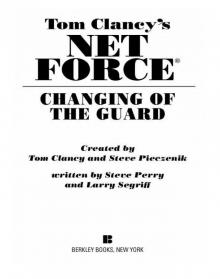 Changing of the Guard
Changing of the Guard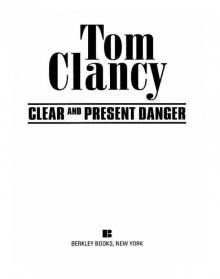 Clear and Present Danger
Clear and Present Danger Hounds of Rome
Hounds of Rome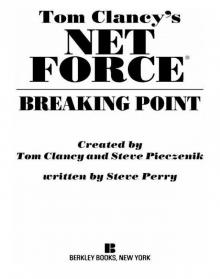 Breaking Point
Breaking Point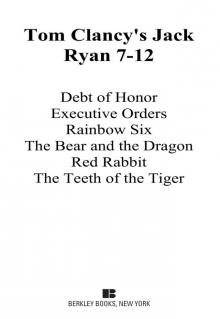 Tom Clancy's Jack Ryan Books 7-12
Tom Clancy's Jack Ryan Books 7-12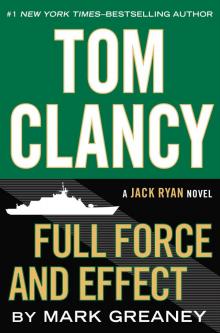 Full Force and Effect
Full Force and Effect The Archimedes Effect
The Archimedes Effect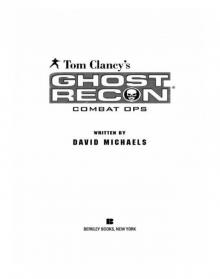 Combat Ops
Combat Ops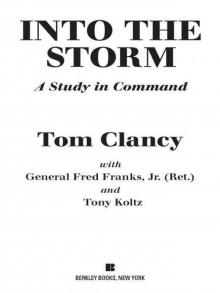 Into the Storm: On the Ground in Iraq
Into the Storm: On the Ground in Iraq Under Fire
Under Fire Point of Impact
Point of Impact Red Rabbit
Red Rabbit Rainbow Six
Rainbow Six The Hunt for Red October
The Hunt for Red October The Teeth of the Tiger
The Teeth of the Tiger Conviction (2009)
Conviction (2009)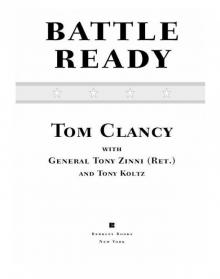 Battle Ready
Battle Ready Patriot Games
Patriot Games The Sum of All Fears
The Sum of All Fears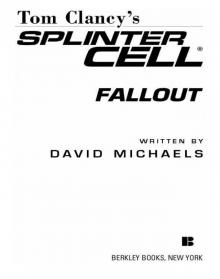 Fallout (2007)
Fallout (2007) Red Storm Rising
Red Storm Rising The Cardinal of the Kremlin
The Cardinal of the Kremlin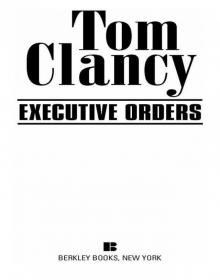 Executive Orders
Executive Orders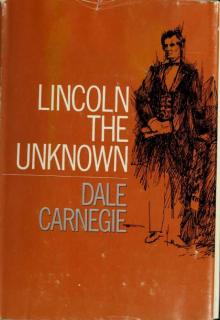 Lincoln, the unknown
Lincoln, the unknown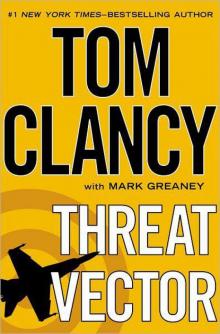 Threat Vector
Threat Vector The Hunted
The Hunted Shadow Warriors: Inside the Special Forces
Shadow Warriors: Inside the Special Forces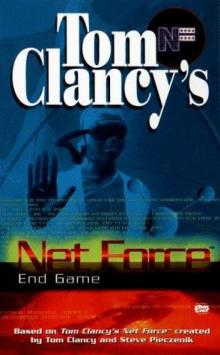 End Game
End Game Special Forces: A Guided Tour of U.S. Army Special Forces
Special Forces: A Guided Tour of U.S. Army Special Forces Locked On
Locked On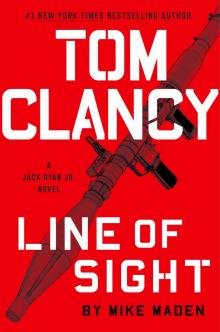 Line of Sight
Line of Sight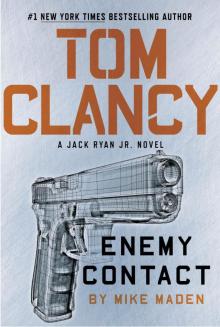 Tom Clancy Enemy Contact - Mike Maden
Tom Clancy Enemy Contact - Mike Maden Fighter Wing: A Guided Tour of an Air Force Combat Wing
Fighter Wing: A Guided Tour of an Air Force Combat Wing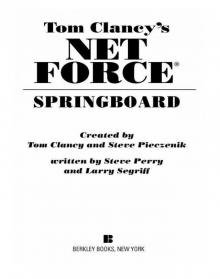 Springboard
Springboard Line of Sight - Mike Maden
Line of Sight - Mike Maden EndWar
EndWar Dead or Alive
Dead or Alive Tom Clancy Support and Defend
Tom Clancy Support and Defend Checkmate
Checkmate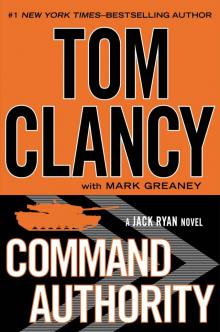 Command Authority
Command Authority Carrier: A Guided Tour of an Aircraft Carrier
Carrier: A Guided Tour of an Aircraft Carrier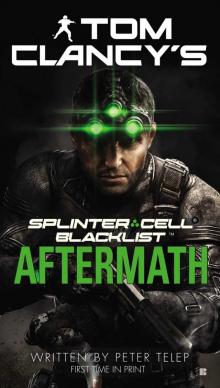 Blacklist Aftermath
Blacklist Aftermath Marine: A Guided Tour of a Marine Expeditionary Unit
Marine: A Guided Tour of a Marine Expeditionary Unit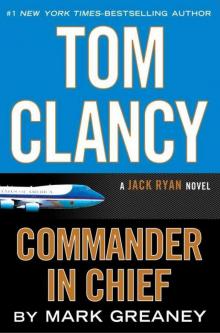 Commander-In-Chief
Commander-In-Chief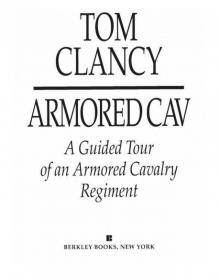 Armored Cav: A Guided Tour of an Armored Cavalry Regiment
Armored Cav: A Guided Tour of an Armored Cavalry Regiment Tom Clancy's Jack Ryan Books 1-6
Tom Clancy's Jack Ryan Books 1-6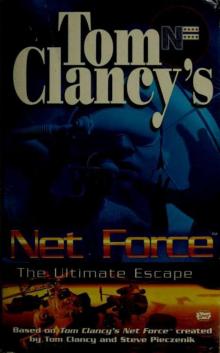 The Ultimate Escape
The Ultimate Escape Airborne: A Guided Tour of an Airborne Task Force
Airborne: A Guided Tour of an Airborne Task Force Debt of Honor
Debt of Honor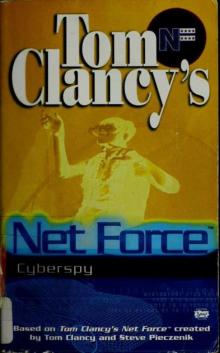 Cyberspy
Cyberspy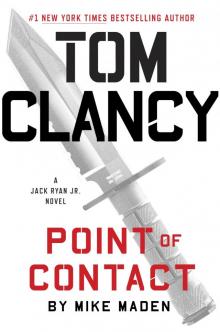 Point of Contact
Point of Contact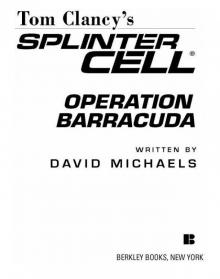 Operation Barracuda (2005)
Operation Barracuda (2005)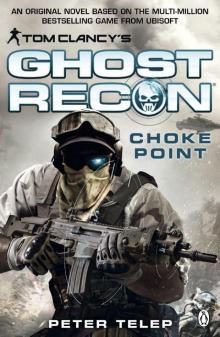 Choke Point
Choke Point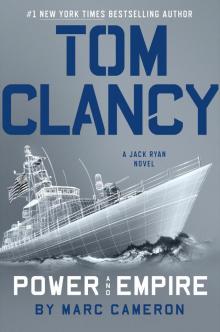 Power and Empire
Power and Empire Every Man a Tiger: The Gulf War Air Campaign
Every Man a Tiger: The Gulf War Air Campaign Endgame (1998)
Endgame (1998)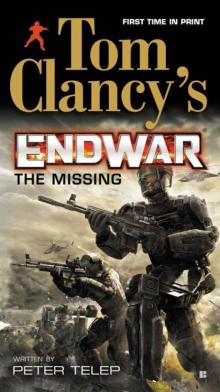 EndWar: The Missing
EndWar: The Missing Splinter Cell (2004)
Splinter Cell (2004)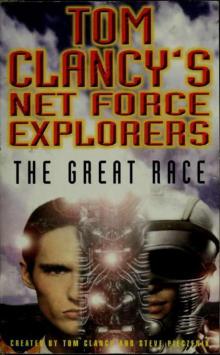 The Great Race
The Great Race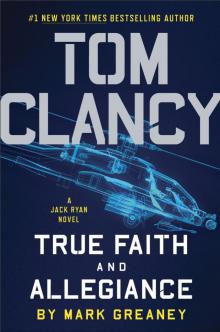 True Faith and Allegiance
True Faith and Allegiance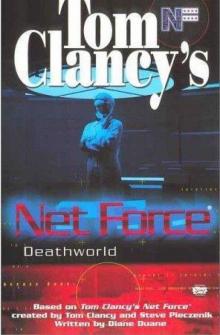 Deathworld
Deathworld Ghost Recon (2008)
Ghost Recon (2008)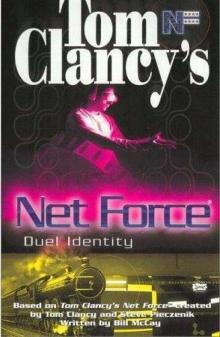 Duel Identity
Duel Identity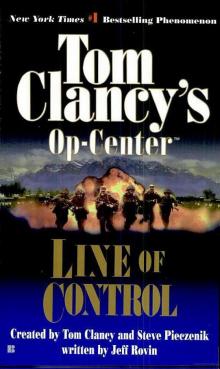 Line of Control o-8
Line of Control o-8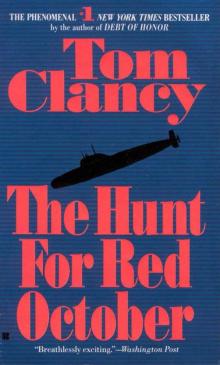 The Hunt for Red October jr-3
The Hunt for Red October jr-3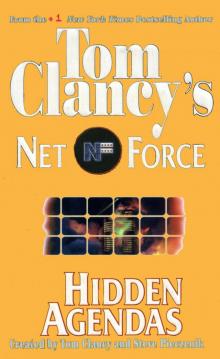 Hidden Agendas nf-2
Hidden Agendas nf-2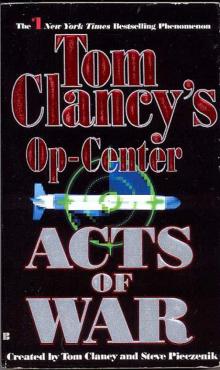 Acts of War oc-4
Acts of War oc-4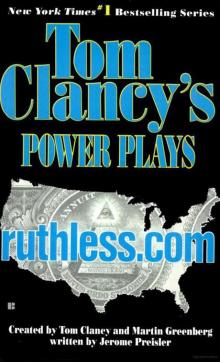 Ruthless.Com pp-2
Ruthless.Com pp-2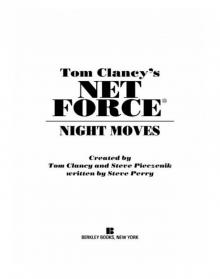 Night Moves
Night Moves The Hounds of Rome - Mystery of a Fugitive Priest
The Hounds of Rome - Mystery of a Fugitive Priest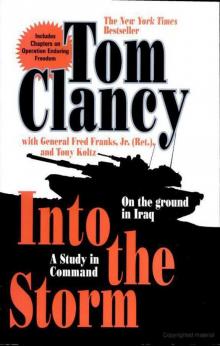 Into the Storm: On the Ground in Iraq sic-1
Into the Storm: On the Ground in Iraq sic-1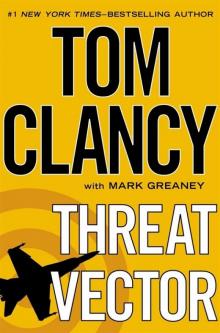 Threat Vector jrj-4
Threat Vector jrj-4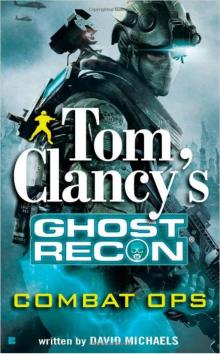 Combat Ops gr-2
Combat Ops gr-2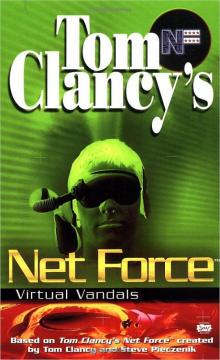 Virtual Vandals nfe-1
Virtual Vandals nfe-1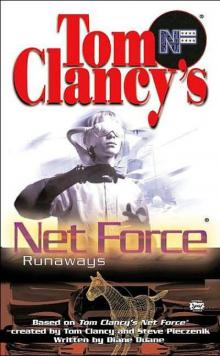 Runaways nfe-16
Runaways nfe-16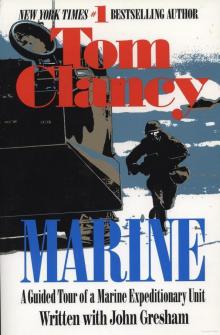 Marine: A Guided Tour of a Marine Expeditionary Unit tcml-4
Marine: A Guided Tour of a Marine Expeditionary Unit tcml-4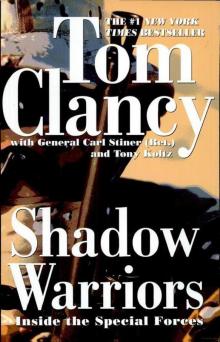 Shadow Warriors: Inside the Special Forces sic-3
Shadow Warriors: Inside the Special Forces sic-3 Jack Ryan Books 1-6
Jack Ryan Books 1-6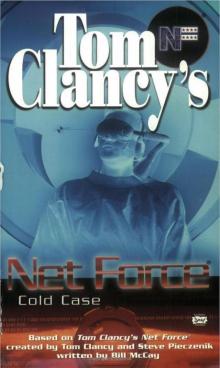 Cold Case nfe-15
Cold Case nfe-15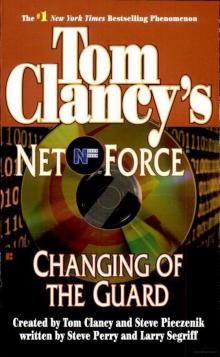 Changing of the Guard nf-8
Changing of the Guard nf-8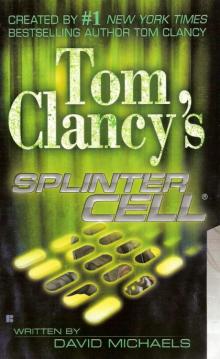 Splinter Cell sc-1
Splinter Cell sc-1 Battle Ready sic-4
Battle Ready sic-4 The Bear and the Dragon jrao-11
The Bear and the Dragon jrao-11 Fighter Wing: A Guided Tour of an Air Force Combat Wing tcml-3
Fighter Wing: A Guided Tour of an Air Force Combat Wing tcml-3 Patriot Games jr-1
Patriot Games jr-1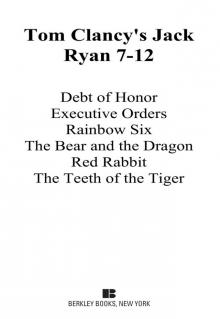 Jack Ryan Books 7-12
Jack Ryan Books 7-12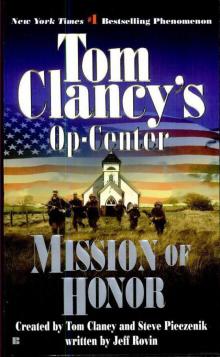 Mission of Honor o-9
Mission of Honor o-9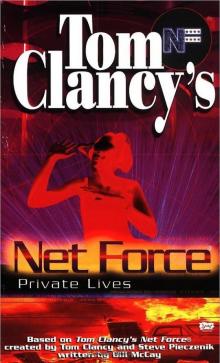 Private Lives nfe-9
Private Lives nfe-9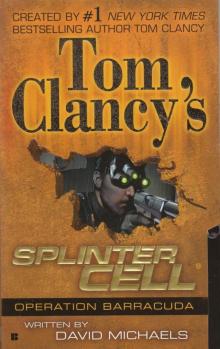 Operation Barracuda sc-2
Operation Barracuda sc-2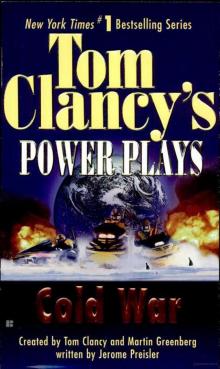 Cold War pp-5
Cold War pp-5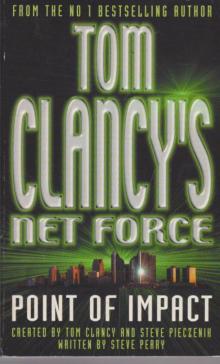 Point of Impact nf-5
Point of Impact nf-5 Red Rabbit jr-9
Red Rabbit jr-9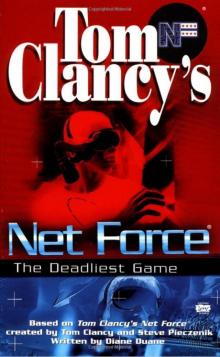 The Deadliest Game nfe-2
The Deadliest Game nfe-2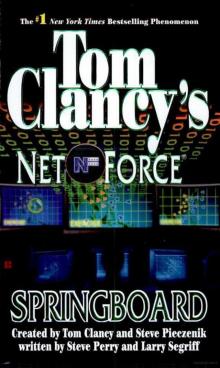 Springboard nf-9
Springboard nf-9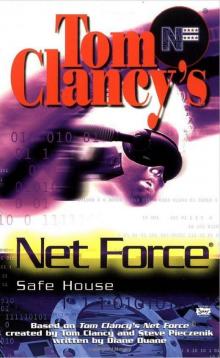 Safe House nfe-10
Safe House nfe-10 EndWar e-1
EndWar e-1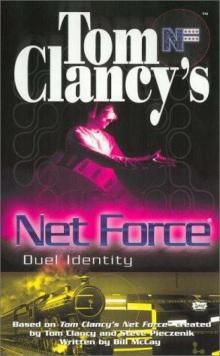 Duel Identity nfe-12
Duel Identity nfe-12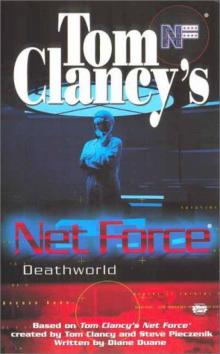 Deathworld nfe-13
Deathworld nfe-13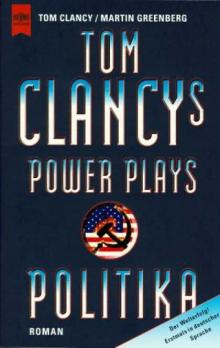 Politika pp-1
Politika pp-1 Rainbow Six jr-9
Rainbow Six jr-9 Tom Clancy's Power Plays 1 - 4
Tom Clancy's Power Plays 1 - 4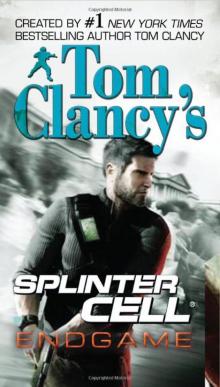 Endgame sc-6
Endgame sc-6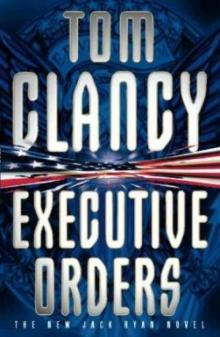 Executive Orders jr-7
Executive Orders jr-7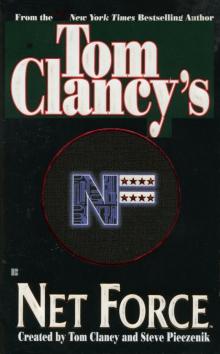 Net Force nf-1
Net Force nf-1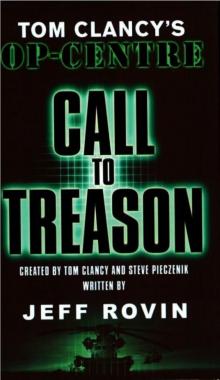 Call to Treason o-11
Call to Treason o-11 Locked On jrj-3
Locked On jrj-3 Against All Enemies
Against All Enemies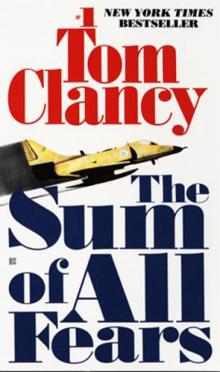 The Sum of All Fears jr-7
The Sum of All Fears jr-7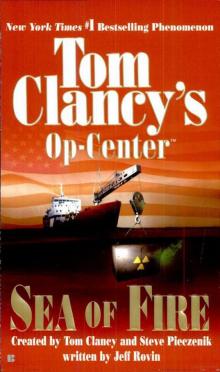 Sea of Fire o-10
Sea of Fire o-10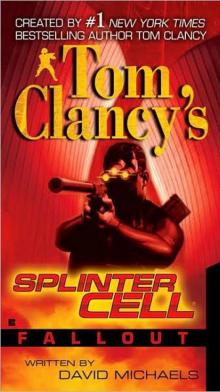 Fallout sc-4
Fallout sc-4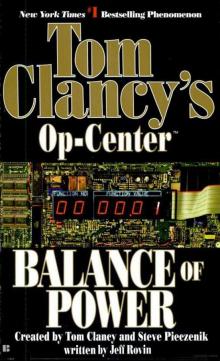 Balance of Power o-5
Balance of Power o-5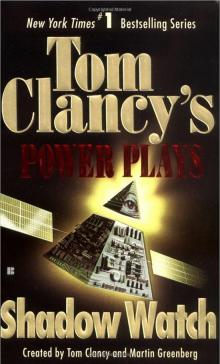 Shadow Watch pp-3
Shadow Watch pp-3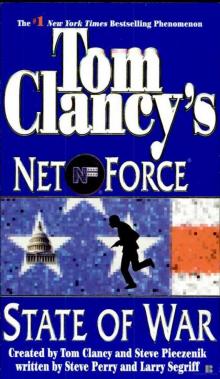 State of War nf-7
State of War nf-7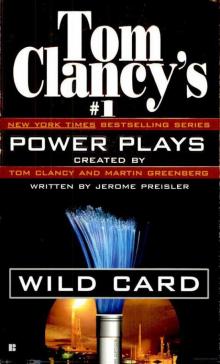 Wild Card pp-8
Wild Card pp-8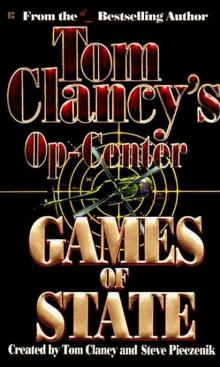 Games of State o-3
Games of State o-3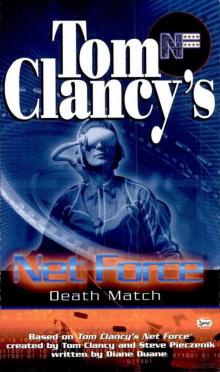 Death Match nfe-18
Death Match nfe-18 Against All Enemies mm-1
Against All Enemies mm-1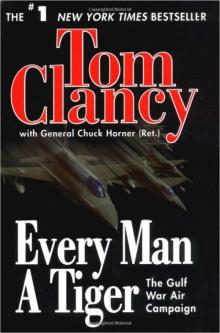 Every Man a Tiger: The Gulf War Air Campaign sic-2
Every Man a Tiger: The Gulf War Air Campaign sic-2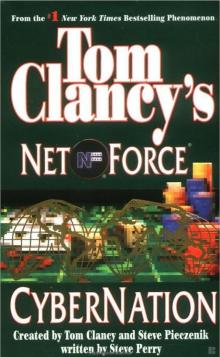 Cybernation nf-6
Cybernation nf-6 Support and Defend
Support and Defend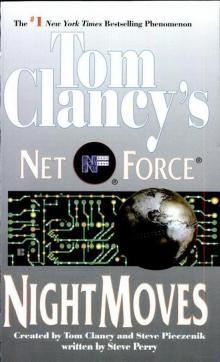 Night Moves nf-3
Night Moves nf-3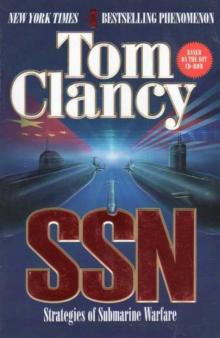 SSN
SSN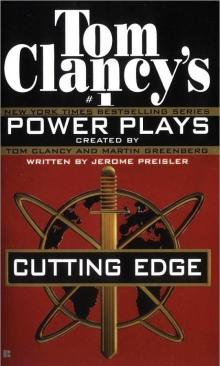 Cutting Edge pp-6
Cutting Edge pp-6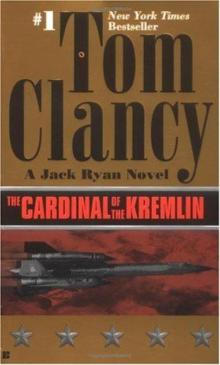 The Cardinal of the Kremlin jrao-5
The Cardinal of the Kremlin jrao-5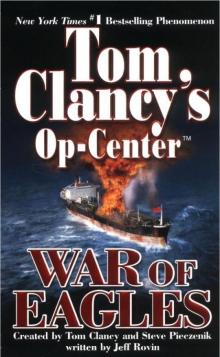 War of Eagles o-12
War of Eagles o-12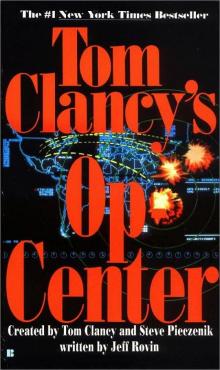 Op-Center o-1
Op-Center o-1 Mirror Image o-2
Mirror Image o-2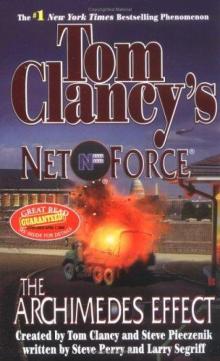 The Archimedes Effect nf-10
The Archimedes Effect nf-10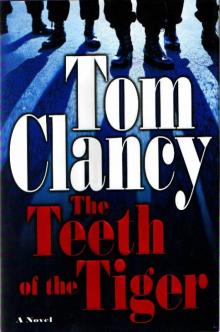 Teeth of the Tiger jrj-1
Teeth of the Tiger jrj-1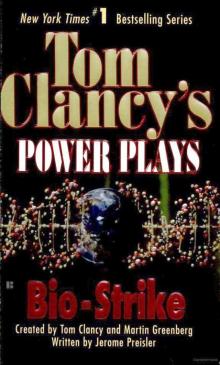 Bio-Strike pp-4
Bio-Strike pp-4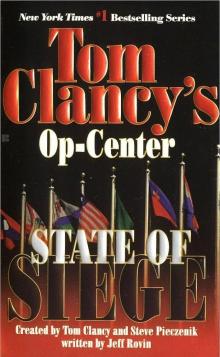 State of Siege o-6
State of Siege o-6 Debt of Honor jr-6
Debt of Honor jr-6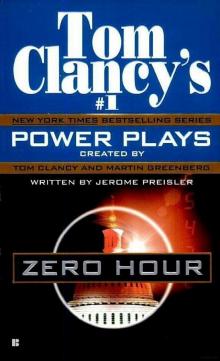 Zero Hour pp-7
Zero Hour pp-7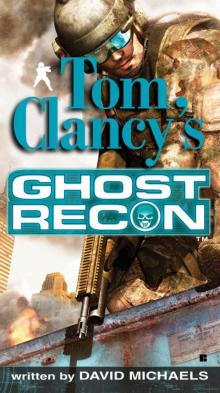 Ghost Recon gr-1
Ghost Recon gr-1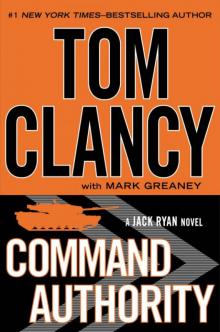 Command Authority jr-10
Command Authority jr-10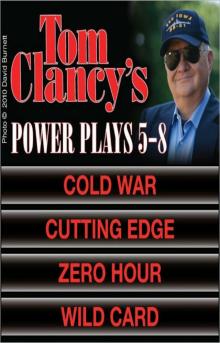 Tom Clancy's Power Plays 5 - 8
Tom Clancy's Power Plays 5 - 8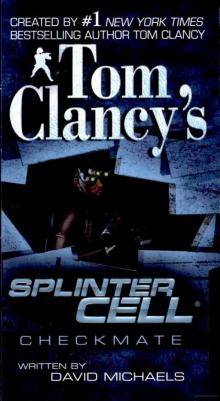 Checkmate sc-3
Checkmate sc-3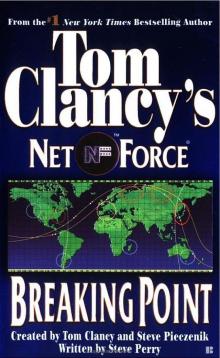 Breaking Point nf-4
Breaking Point nf-4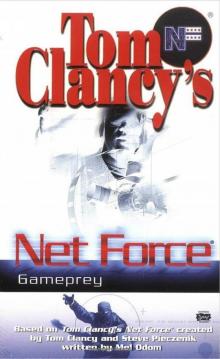 Gameprey nfe-11
Gameprey nfe-11 The Hunted e-2
The Hunted e-2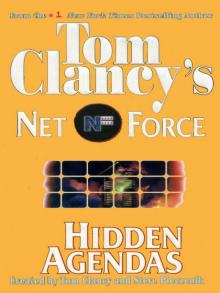 Hidden Agendas
Hidden Agendas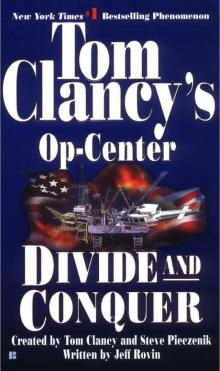 Divide and Conquer o-7
Divide and Conquer o-7